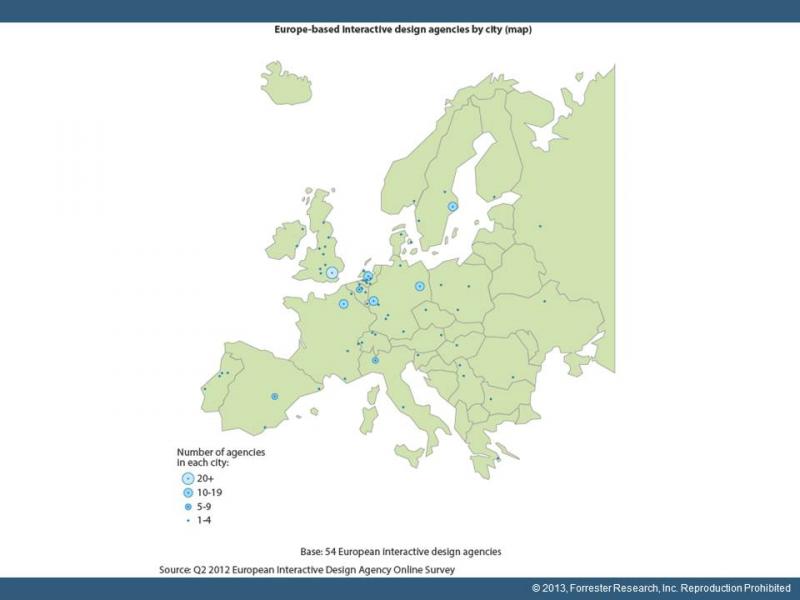“Letter From Germany” – Interactive Design Agencies In Germany
Peter O'Neill here with my next edition of the somewhat regular blog in which I highlight something important for you about B2B marketing in Germany. This time, I’ll give you some exclusive German market details from our new report “Interactive Design Agency Overview, Europe 2013” published by my illustrious colleague Jonathan Browne. In the report, fully available to Forrester clients, Jonathan analyzes and compares 54 European agencies according to various criteria:
1. The type of work that the agencies do — from market strategy through web design to app development.
2. Geographic and industry-sector coverage (see below for a specific cut for Germany).
3. The size of projects, even by project type.

Companies doing business in Europe need vendors that can help them differentiate their offerings in an increasingly complex digital landscape. As European buyers continue to adopt new digital touchpoints and platforms, it is more critical than ever to partner with interactive design agencies that offer the right combination of skills and the ability to execute in the right countries. Size isn’t everything. Only seven out of 54 agencies had 250 or more full-time employees (FTEs) dedicated to research, design, and testing services — these are the big fish of the industry. However, these large players do not dominate the market. Even large enterprises often choose to work with midsize vendors — defined by Forrester as having 50 to 249 FTEs in research, design, and testing roles — that are capable of handling complex interactive projects. Marketers can also turn to one or more of the innumerable small agencies, which range from regional vendors and emerging niche-technology specialists to tiny partnerships and single consultants.
I went through Jonathan’s pan-European listings and extracted those agencies located in Germany for this blog. I have listed their company size, locations, and the industry experience that they reported to us in the survey. I know that more and more B2B marketers are even open to engaging agencies with B2C (especially retail) experience in response to changes in their customer demographics and behavior.

Jonathan also exposed the following agency characteristics in his European analysis: The agencies had strong marketing capabilities, led by strategy and social media; they focused development capabilities on the front end; digital and social strategy dominated their other capabilities; and they favored the UK in terms of location, albeit not exclusively — 39 of the 54 had offices in the UK but, as the map above shows, there were full-service offices in 26 countries around Europe.
Businesses today face the challenge of meeting customer expectations across the explosion of digital touchpoints that Forrester calls the splinternet. To do this, they need agency partners that can design and develop unified experiences that cross multiple digital channels — websites, mobile websites, applications for smartphones and tablets, social media, in-store displays, and so on.
Need more details? Drop me a line. As always, I’d love to hear from you on this and other topics.
Always keeping you informed! Peter